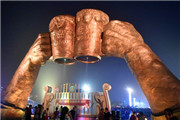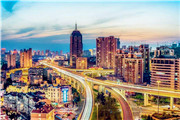Qingdao to build seven large business zones
Updated: 2013-08-29
|
|||||||||
Qingdao has established five business districts, occupying about half of the city's business streets. The revenue of the five districts accounts for 30 percent of the city's total. In the near future, two more business districts will be established, according to Qingdaonews.com.
Another 14 shopping malls with a total area of 1.05 million square meters are scheduled to be completed this year. Some of them have already gone into operation.
Li Cang district in Qingdao city has become the city's largest business area after the completion of Wanda Plaza and Rock City.
"Li Cang has developed very fast in recent years," said a staff member of the city's commercial bureau. "The recently-built Power Long, Wanda Plaza and Rock City, with a total area of 500,000 square meters, have greatly enlarged Li Cang's business circle."
As the city develops, the business districts in Qingdao are taking on a new look. In recent years five municipal business areas, nine district business centers, three business services, 35 business streets, 116 retail sites, 164,000 outlets and more than 200 shopping malls have provided business services for local residents.
Among these business areas, the one around the Qingdao International Sailing Center leads the way. A great number of high-end shopping malls, such as Hisense Plaza, Mixc, Sunny World, Marina City, Jusco, Mykal and Ginza have settled here.
Hisense Plaza's sales have grown at double-digit rates annually. It has become the city's leading shopping mall. Sunny World achieved 700 million yuan ($114 million) in sales last year and enjoys stable growth.
“Residents in Qingdao prefer high-end brands and are able to afford expensive goods. Moreover, shopping malls in Qingdao enjoy great reputation, and people like to come and buy stuff,” said an insider.
Fourteen shopping malls built earlier this year have outrun the annual target. With two more city-level business zones planned by 2016, Qingdao will soon have seven business zones serving the public.
Edited by Michael Thai, Li Xiaoliang and Zhao Jingchen




